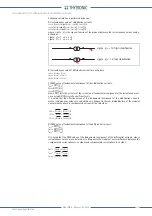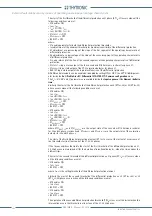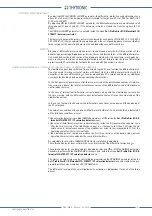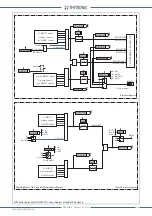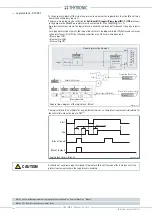
FUNCTION CHARACTERISTICS
237
NVA100X-D - Manual - 02 - 2016
Calculation of the differential and stabilizing currents
Following calculation is performed by device:
Instantaneous value of stabilization currents:
i
SL1
= {
i
L1c(H)
+ sign[
i
L1c(L)
∙
i
L1c(H)
] ∙
i
L1c(L)
} /2
i
SL2
={
i
L2c(H)
+sign[
i
L2c(L)
∙
i
L2c(H)
] ∙
i
L2c(L)
} /2
i
SL3
={
i
L3c(H)
+sign[
i
L3c(L)
∙
i
L3c(H)
] ∙
i
L3c(L)
} /2
where sign [x ∙ y] is the signum function of the product between the instantaneous values x and y,
defi ned as:
sign[x ∙ y] = +1 se x ∙ y ≥ 0
sign[x ∙ y] = -1 se x ∙ y < 0
Instantaneous value of differential current for each phase:
i
dL1
=
i
L1c(H)
+
i
L1c(L)
i
dL2
=
i
L2c(H)
+
i
L2c(L)
i
dL3
=
i
L3c(H)
+
i
L3c(L)
RMS value of fundamental component of the stabilization currents:
I
SL1
= DFT1[
i
SL1
]
I
SL2
=DFT1[
i
SL2
]
I
SL3
=DFT1[
i
SL3
]
where DFT1[x] is the calculus of the rms value of fundamental component of the instantaneous val-
ues x using DFT (Discrete Fourier Transform).
It is noted that the effective values of the fundamental component of the stabilization currents,
whose instantaneous values are calculated as in A) equal to the sum, divided by two, of the modules
concerning the phasors compensated currents of the two sides:
RMS value of fundamental component of the differential currents:
I
dL1
= DFT1[
I
dL1
]
I
dL2
= DFT1[
I
dL2
]
I
dL3
= DFT1[
I
dL3
]
It is noted that the RMS values of the fundamental component of the differential currents, whose
instantaneous values are calculated as in B) equal to the module of vector difference between the
compensated current phasors on side H and compensated current phasors on side L:
A)
B)
C)
D)
sign[x ∙ y] = +1
≡
high
stabilization
sign[x ∙ y] = -1
≡
low
stabilization
I
SL1
= |
I
L1c(H)
+
I
L1c(L)
| / 2
I
SL2
= |
I
L2c(H)
+
I
L2c(L)
| / 2
I
SL3
= |
I
L3c(H)
+
I
L3c(L)
| / 2
I
dL1
= |
I
L1c(H)
+
I
L1c(L)
|
I
dL2
= |
I
L2c(H)
+
I
L2c(L)
|
I
dL3
= |
I
L3c(H)
+
I
L3c(L)
|















